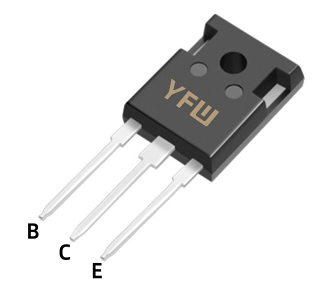How to Use Power Transistors 3
Date:2025-05-29 Categories:Product knowledge Hits:448 From:Guangdong Youfeng Microelectronics Co., Ltd
When handling
power transistors, take precautions to avoid electrostatic discharge (ESD). Use ESD-safe equipment and grounding straps to prevent damage to the sensitive semiconductor junctions. Improper handling can lead to latent defects that affect the transistor’s performance over time.
During the assembly process, ensure proper soldering. Use a soldering iron with controlled temperature to avoid overheating the transistor, which can damage the internal structure. Soldering joints should be firm and free of cold solder or solder bridges that could cause short circuits.
Testing the
power transistors circuit is essential before full deployment. Start with low power and gradually increase to the rated operating conditions, monitoring the temperature, current, and voltage. Use an oscilloscope to check for signal distortion in amplification circuits or switching waveforms in switching applications. Make adjustments as needed to ensure the circuit operates within the transistor’s safe operating area (SOA).
Finally, refer to the manufacturer’s datasheet for specific guidelines and recommendations. Datasheets provide detailed information about the transistor’s characteristics, recommended biasing circuits, and thermal specifications. Following the datasheet instructions ensures that you use the
power transistors within its designed parameters, maximizing performance and reliability.
By carefully considering selection, biasing, thermal management, circuit design, protection, handling, assembly, testing, and following datasheet guidelines, you can effectively use
power transistors in your electronic projects, ensuring they operate efficiently and safely.

Previous:
Classification, Structure, and Principle of MOSFET
Next:
Transient Voltage Suppressor Diode Usage Guide
